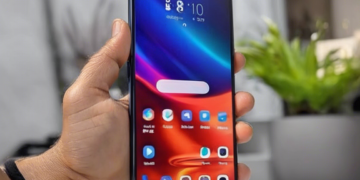Introduction:
In the vast landscape of graphic design, where visuals communicate ideas, emotions, and information, the concept of accessibility takes center stage. As the digital world evolves, so does the responsibility to ensure that graphic design is inclusive and accessible to all. Enter the era of artificial intelligence (AI) – a transformative force that, when harnessed thoughtfully, contributes significantly to creating designs that transcend barriers. In this blog, we embark on a journey into the realm of accessibility in graphic design, exploring the profound impact of AI on fostering inclusivity. We’ll also delve into Appy Pie Design’s renowned Meme Generator and Emoji Maker, showcasing the role of AI in making expressive design accessible to diverse audiences.
The Imperative of Accessibility in Graphic Design:
Design for All:
Accessibility in graphic design is rooted in the principle of “design for all.” It emphasizes creating visuals that can be comprehended, navigated, and appreciated by individuals of varying abilities and disabilities. As the digital landscape expands, so does the need for designs that transcend physical, cognitive, and sensory barriers.
The Digital Divide:
In an age where digital content is omnipresent, the digital divide becomes more apparent when designs are not inclusive. Graphic designers must strive to bridge this gap by incorporating accessibility features that cater to a broad audience, fostering a sense of belonging and equal access to information and experiences.
AI in Graphic Design: Catalyst for Inclusive Creativity
Intelligent Alt Text Suggestions:
Alt text is a fundamental aspect of web accessibility, providing descriptions for images that assist individuals using screen readers. Appy Pie Design’s AI algorithms contribute to inclusivity by intelligently suggesting alt text for images, ensuring that users with visual impairments receive accurate and meaningful descriptions of graphic content.
Cognitive Ease through AI-Driven Design Elements:
Appy Pie Design’s AI tools go beyond traditional alt text suggestions by analyzing design elements that enhance cognitive ease. From recommending clear and legible fonts to suggesting color contrasts that aid readability, AI contributes to creating graphic designs that are not only visually appealing but also easily comprehensible by diverse audiences.
Semantic Analysis for User-Friendly Navigation:
Navigating through graphic content should be an intuitive experience for all users. Appy Pie Design’s AI employs semantic analysis to suggest navigational elements, ensuring that the flow of information is logical and user-friendly. This approach benefits individuals with cognitive disabilities and contributes to a more inclusive design ethos.
AI-Infused Inclusive Expressive Design:
Expressive Accessibility with the Meme Generator:
Meme culture, a vibrant form of online expression, finds inclusivity in Appy Pie Design’s Meme Generator powered by AI. The platform ensures that memes can be not only visually engaging but also accessible to users of all abilities. AI contributes by suggesting image descriptions, text alternatives, and layout adjustments, making meme creation an inclusive experience.
Emojis as Inclusive Visual Language:
Emojis have become a universal language, transcending linguistic barriers. Appy Pie Design’s Emoji Maker, enriched with AI capabilities, contributes to inclusivity by suggesting diverse and inclusive emojis. From offering emojis representing various abilities to ensuring a wide range of skin tones, AI-driven emoji creation fosters a more inclusive visual language.
AI-Powered Color Accessibility:
Adaptive Color Recommendations:
Color plays a crucial role in graphic design, and Appy Pie Design’s AI-driven color recommendations contribute to accessibility. By analyzing color palettes and suggesting adaptive color combinations, AI ensures that designs are not only aesthetically pleasing but also accessible to individuals with color vision deficiencies.
Color Contrast Optimization:
Ensuring sufficient color contrast is essential for readability, especially for individuals with visual impairments. Appy Pie Design’s AI analyzes design elements and recommends color contrasts that meet accessibility standards. This ensures that text and graphical content remain distinguishable and accessible to users with varying levels of visual acuity.
AI in Graphic Design Education: Fostering Inclusive Creativity
Accessible Learning Resources:
Appy Pie Design envisions a future where graphic design education is inclusive and accessible to all. AI-driven tools can assist educators in creating learning resources that cater to diverse learning styles and abilities. From providing alternative formats to suggesting inclusive visuals, AI fosters an environment where graphic design education is truly accessible.
Inclusive Design Curriculum:
The integration of AI in graphic design education extends to curriculum development. Appy Pie Design’s commitment to inclusivity involves suggesting curriculum elements that emphasize the importance of creating designs that cater to diverse audiences. This ensures that the next generation of graphic designers is equipped with the knowledge and skills to champion inclusive design practices.
The Future of AI-Infused Accessibility in Graphic Design: Appy Pie Design’s Vision
Looking ahead, the future of graphic design lies in the seamless integration of AI with accessibility features. Appy Pie Design envisions a landscape where AI actively collaborates with designers, educators, and users in real-time to enhance inclusivity in graphic content. This vision places the platform at the forefront of shaping the future of accessible and intelligent graphic design.
Conclusion: A Future of Inclusive Creativity with AI
In the evolving landscape of graphic design, the synergy between AI and accessibility is not just a technological advancement; it’s a creative revolution. Appy Pie Design, with its commitment to inclusive design practices, invites designers, educators, and enthusiasts to explore a world where AI is not just a tool but a catalyst for fostering creativity that transcends barriers.
As we celebrate the impact of AI on accessibility in graphic design, the platform beckons us to reimagine visuals that are not only aesthetically pleasing but also universally accessible. In this era of AI-infused inclusive design, every pixel becomes a brushstroke in the canvas of creativity, contributing to a future where graphic design is a truly inclusive and expressive art form. The journey toward inclusivity is ongoing, and Appy Pie Design stands as a beacon, guiding us toward a future where graphic design is not just seen but experienced by all.








































